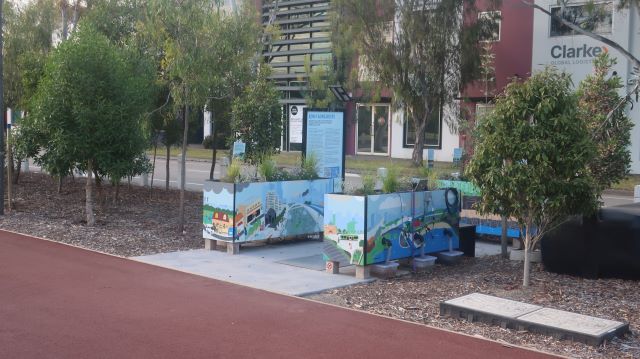Report from the Panel
A Planning Panel is reviewing the draft planning controls, Amendment GC81, for Fishermans Bend. The hearings started on 1st March and the Panel will sit for a marathon 56 days to hear all submissions. The Panel will deliberate on the submissions and prepare a report to the Minister within 40 days of the last sitting day. The Minister for Planning will then respond to the Panel report.
Affordable housing was the theme on Wednesday 21 March.
The City of Port Phillip engaged Marcus Spiller of SGS Economics and Planning as an expert witness on affordable housing. His written submission is here. He also presented a verbal submission to the Panel from which these notes were taken.
The Framework sets a target of 6% of affordable housing. Affordable housing in the draft Framework was clarified to mean social housing in a registered housing association.
“Affordable housing is as essential as open space, roads and schools” said Spiller in his opening remarks. It is essential infrastructure.
While the policy, strategies and objectives of the Framework strongly support affordable housing, the planning mechanisms to deliver it, are in Spiller’s view, weak and inadequate.
Whereas open space, roads and schools are provided for in the Framework on an as needs basis, affordable housing is to be delivered by means of Floor Area Uplift (FAU).
A FAU allows a developer to build more floor area on a site (above that allowed by the FAR) in exchange for making a contribution of an agreed public benefit. (Framework, p37)
Developers can seek to apply a FAU on their site which is transferred to registered housing associations. For every one affordable housing unit delivered, the developer is able to construct an additional eight dwellings for private sale. (Framwork 1.11.3)
Spiller said that it would be ‘absolute folly’ and ‘recklessly risky’ to rely on FAU as the only mechanism to deliver affordable housing. It is an entirely voluntary approach, and should developers not take up the option, no housing at all would be delivered. He argued that with the supply of affordable housing stagnant and declining, a figure of 10% more accurately reflected the level of need. While he supported FAU, he argued that it should make up only 3% and there should also be a mandatory inclusion for affordable housing.
In cross examination, these counter arguments were strongly made by counsel for the landholders
- It is unreasonable to have a different approach in Fishermans Bend to other urban renewal areas.
- Provision of social housing is a government responsibility.
- If this impost is placed on developers in Fishermans Bend, they will choose to develop in other renewal areas.
- Providing affordable housing would make development unviable.
- The State Government’s policy Homes for Victorians does not explicitly include provision for inclusionary zoning, so it should not be included in Fishermans Bend.
- The 6% in the Framework applies to the full spectrum of affordable housing, not just to social housing.
It is important to note that the City of Port Phillip supports a 6% housing affordability target in Fishermans Bend. The 10% target is Spiller’s expert opinion.
The way in which affordable housing will be delivered in Fishermans Bend will be dependent on the outcome of the Panel process.
More
Fishermans Bend draft Framework
Fishermans Bend Planning Review Panel: All documents submitted to the Panel are listed at Documents.
The definition of affordable housing in the draft Framework is taken from Plan Melbourne “Housing that is appropriate for the needs of a range of very low to moderate income households, and priced (whether mortgage repayments or rent) so these households are able to meet their other essential basic living costs”
The City of Port Phillip defines affordable housing as “housing that meets the needs of low to moderate income households unable to access suitable housing in the private market without assistance. The currently accepted benchmark for affordability is 30 per cent or less of household income spent on accommodation costs, for households in the lowest 40 per cent of the income range. Social Housing provides rental housing in perpetuity to low household income groups.” (In our Backyard: Growing Affordable Housing in Port Phillip 2015 – 2015)




Leave a Reply